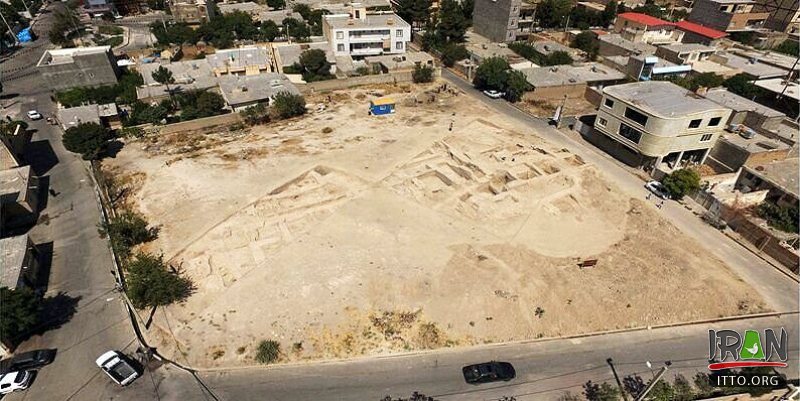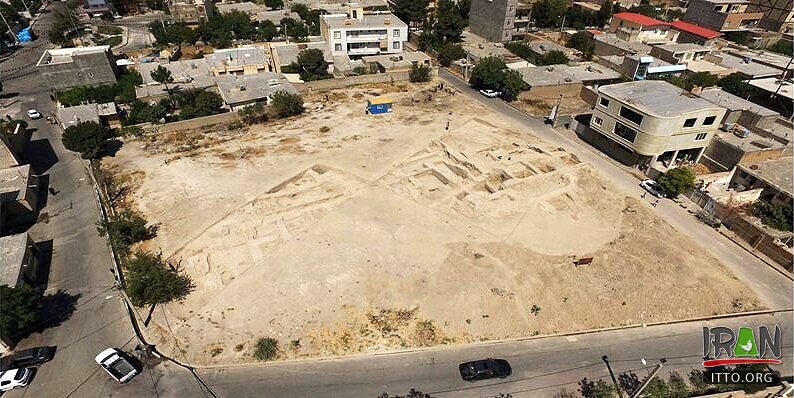Archaeologists have unearthed some remains of an ancient monument in Mehrdasht village, which is situated in Malard county, southwest of Tehran.
“Excavations on Khatunlar hill in Malard’s Mehrdasht village led to the discovery of the remains of a vast, significant monument, which is estimated to date back to the Seljuk era (1037–1194) and Ilkhanate times (1256–1335/1353),” senior archaeologist Mohammadreza Nemati said on Saturday.
The hill, with a land area of approximately 4,400 square meters, is situated in the center of Mehrdasht village, some 60km southwest of Tehran, the archaeologist who led the excavations said, adding that the hill is surrounded by streets and residential houses.
“In the past most parts of the hill have been flattened by loaders with the aim of making streets and houses.”
Nemati explained that two excavations have so far been carried out on the hill; one yielded a narrow brick hallway and rooms of rectangular and square shapes, while the other, which was conducted on the topmost height of the hill, resulted remains of a vast monument with an entry towards the west that leads to a passageway with small and large rooms.
Regarding to objects that have been found thus far, the archaeologist said, “Among the unearthed objects are a chess piece (the knight), coins, oil lamps, earthen manuscripts, a large number of jars and potteries, which are mostly unglazed and bear carved and stamped ornamentations.
Documentarian of the findings and initial safety measures have been commenced and the monument will be vaulted as soon as the proper outline is drawn, he concluded.
Earlier in January, some other relics and urban structures, dating from Seljuk era, were found during a construction project in the city of Rey, south of Tehran. The findings included two clay jars, parts of a water supply system, urban sewage disposal, and flowing bricks.
In the 11th and 12th centuries Rey (also known as Shahr-e Rey) was one of the capitals of the Seljuk Empire. It was devastated in the 13th century when the Mongols swept through and, these days, has been swallowed up by the urban sprawl of Tehran.
Hulegu, a grandson of Genghis Khan, was given the task of capturing Iran by the paramount Mongol chieftain Mongke. Hulegu set out in about 1253 with a Mongol army of about 130,000. He founded the Il-Khanid dynasty in 1256, and by 1258 he had captured Baghdad and all of Iran. The Il-Khans consolidated their position in Iran and reunited the region as a political and territorial entity after several centuries of fragmented rule by petty dynasties.



